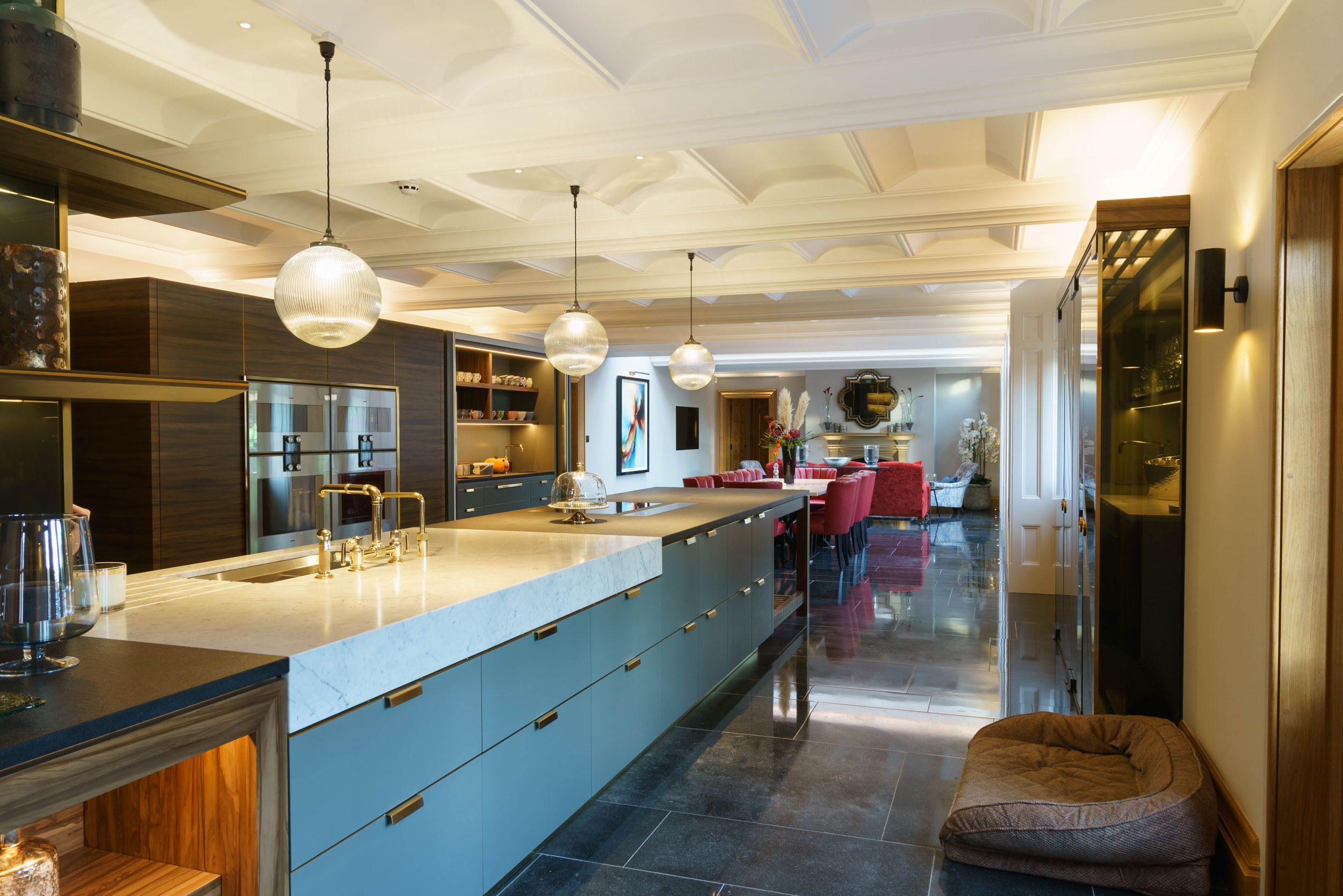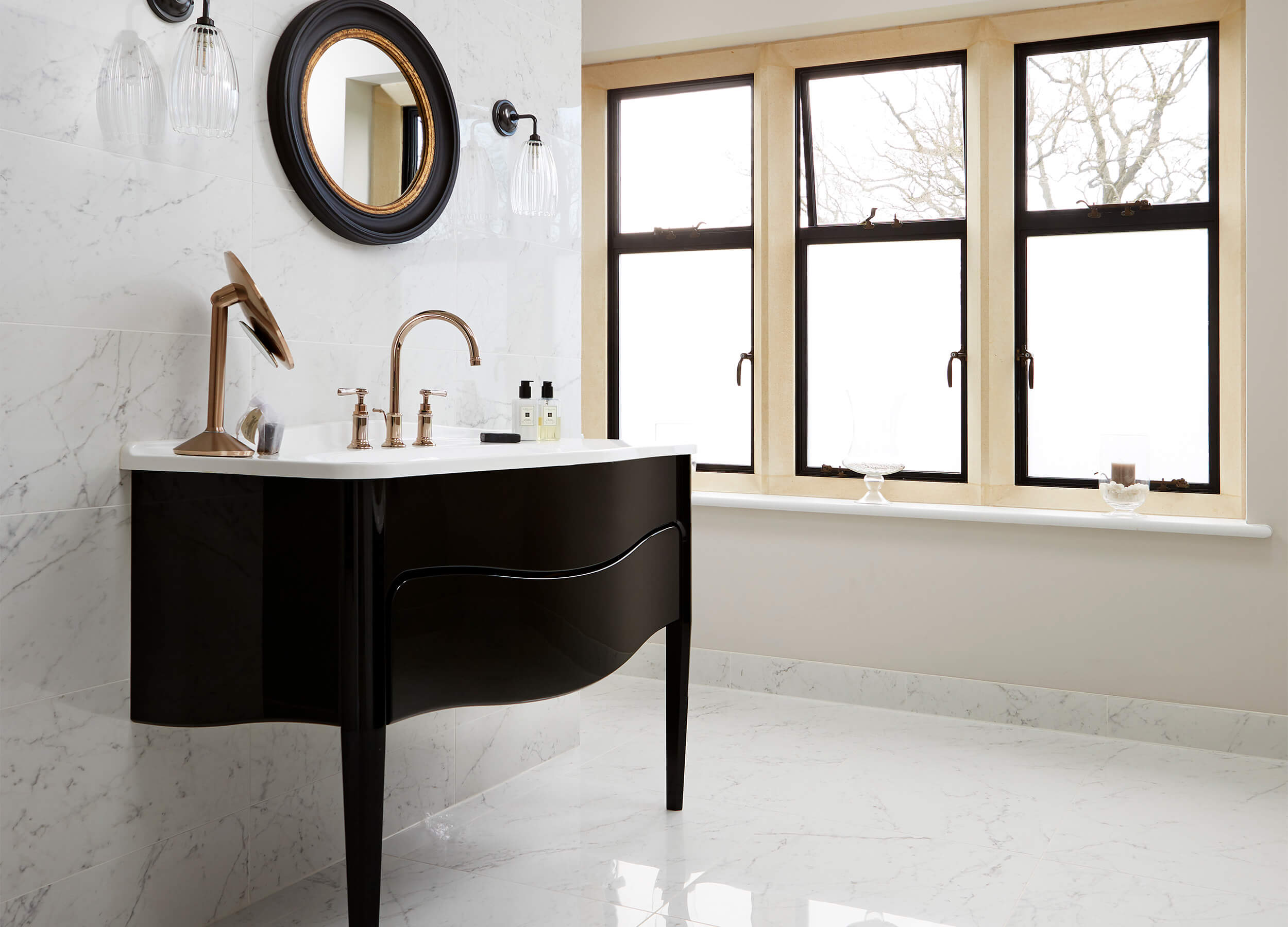Marble
Marble flooring offers a sleek, elegant finish to an interior, popular in many 21st century homes.
Traditionally used in kitchens and bathrooms, marble flooring doesn’t have to be limited to these rooms – the material adds a touch of class in other areas of the home, like hallways and entryways. However, softer materials are cosier in bedrooms and living areas.
It did use to be thought of as being quite cold, however if you pair it with underfloor heating, you can achieve a sleek look without losing any warmth.
Granite
A popular choice of natural stone flooring, granite fits perfectly in rooms with an industrial interior design style. Granite’s dark shade and rugged, organic look and feel make it a staple of the industrial style.
Like marble, granite floors are ideal for use in kitchens, bathrooms and hallways. However, they require regular attention and maintenance compared with other materials.
Concrete
Concrete is ideal for durable, long-lasting flooring that is easy to maintain. It doesn’t require tiling, which means it’s less likely to become chipped or broken.
Also, keep in mind concrete doesn’t hold heat well, so your floors will get cold in the winter, which can be uninviting – especially in kitchen dining areas where you plan to spend evenings or host drinks with friends.
Hardwood
Wood flooring can be hard or soft, with the former popular for its versatility, both in style and practicality.
Hardwood flooring is reasonably priced compared with stone tiles, plus it’s longer-lasting, warmer and complements a range of interior design styles, such as modern, contemporary, Scandi and industrial décor.
Ceramic Tiles
Ceramic tiles perfectly complement a range of interior designs, thanks to their versatility in shape, size, colour and pattern. However, they can prove heavy for use on the second floor of the home.
The traditional benefits of ceramic tiles include their affordability and adaptability to any room.
Porcelain Tiles
Porcelain tiles are a type of ceramic, recognisable for their harder, more durable nature. They are more resistant to moisture than traditional ceramic tiles, making them perfect for use in bathrooms.





